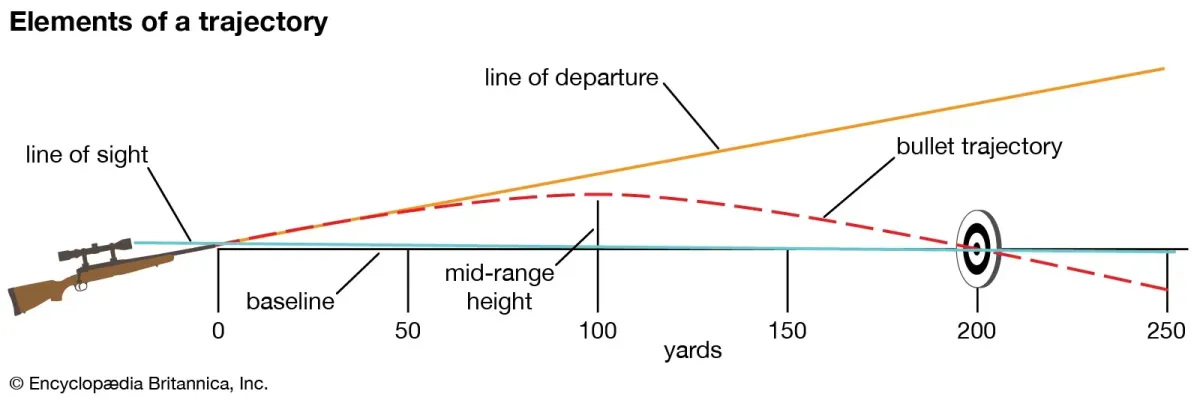
Understanding Small Arms Ballistics: A Comprehensive Beginner's Guide
Understanding Small Arms Ballistics: A Comprehensive Beginner's Guide
Introduction to Ballistics
What is Ballistics?
Ballistics, in the simplest terms, is the science of projectiles and firearms. It is a crucial aspect of small arms operations, as it deals with the principles of the launch, flight, behavior, and effects of bullets. This science is subdivided into three distinct categories: internal, external, and terminal ballistics.
Importance of Ballistics in Small Arms
For small arms users, understanding ballistics is vital. It helps improve accuracy, safety, and the overall effectiveness of the firearm. Whether you're a novice shooter, a seasoned law enforcement officer, or a military personnel, a solid grasp of basic ballistics can significantly enhance your shooting skills.
Components of Small Arms Ballistics
Bullet
The bullet is the projectile expelled from the barrel of a firearm. Various factors such as the bullet's shape, size, and material composition can significantly affect its ballistic performance.
Muzzle Velocity
Muzzle velocity refers to the speed at which the bullet leaves the firearm's muzzle. It is typically measured in feet per second (fps) or meters per second (m/s). Higher muzzle velocities generally lead to flatter trajectories and less bullet drop, increasing the bullet's effective range.
Trajectory
The trajectory is the path that a bullet follows after it leaves the muzzle. In an ideal vacuum, the bullet would follow a straight line. However, due to external forces like gravity and air resistance, it follows a curved path.
Terminal Ballistics
Terminal ballistics is the study of what happens when a projectile impacts a target. It involves studying the behavior of a bullet when it hits the target and the damage it inflicts.
Factors Affecting Ballistics
Gravity
Gravity constantly pulls the bullet downward from the moment it leaves the barrel. Understanding this allows you to adjust your aim to compensate for bullet drop over distance.
Wind
Wind can significantly affect a bullet's path, especially over long distances. Wind speed and direction are critical considerations when calculating a shot's accuracy.
Temperature and Humidity
Temperature and humidity can also impact ballistics. Warm air is less dense than cool air, potentially leading to less drag on the bullet. Similarly, high humidity can decrease air density, slightly affecting the bullet's trajectory.
The Role of Ballistics in Firearm Safety
Understanding ballistics plays a crucial role in firearm safety. Knowing how, when, and where a bullet will impact helps in ensuring safe firearm handling and operation.
Conclusion
Understanding small arms ballistics is fundamental to improving shooting accuracy, enhancing firearm safety, and ultimately becoming a more proficient shooter. By grasping the concepts of bullet characteristics, muzzle velocity, trajectory, terminal ballistics, and the various factors influencing these elements, you can make informed decisions and adjustments that enhance your shooting performance. Remember, a responsible firearm user is not just one who knows how to fire a gun, but also one who understands the science behind each shot.
FAQs
Q1: What is the significance of understanding ballistics in small arms operation?
Understanding ballistics can enhance accuracy, ensure safety, and increase overall firearm efficiency. It helps shooters make necessary adjustments to their aim, taking into account factors like wind, gravity, and atmospheric conditions.
Q2: What is muzzle velocity and why is it important?
Muzzle velocity refers to the speed at which a bullet exits the firearm's barrel. It's crucial because a higher muzzle velocity can lead to a flatter trajectory and less bullet drop, increasing the bullet's effective range.
Q3: How does gravity affect a bullet's trajectory?
Gravity constantly pulls the bullet downward once it leaves the barrel, resulting in a curved bullet trajectory. Shooters must compensate for this bullet drop, especially when shooting over long distances.
Q4: How does wind impact a bullet's flight?
Wind can significantly alter a bullet's path. Depending on the wind's speed and direction, it can push the bullet off course, which is particularly noticeable when shooting at long distances.
Q5: What is terminal ballistics?
Terminal ballistics is the study of what happens when a projectile impacts a target. It involves the analysis of the bullet's behavior upon hitting the target and the resulting damage it inflicts.
